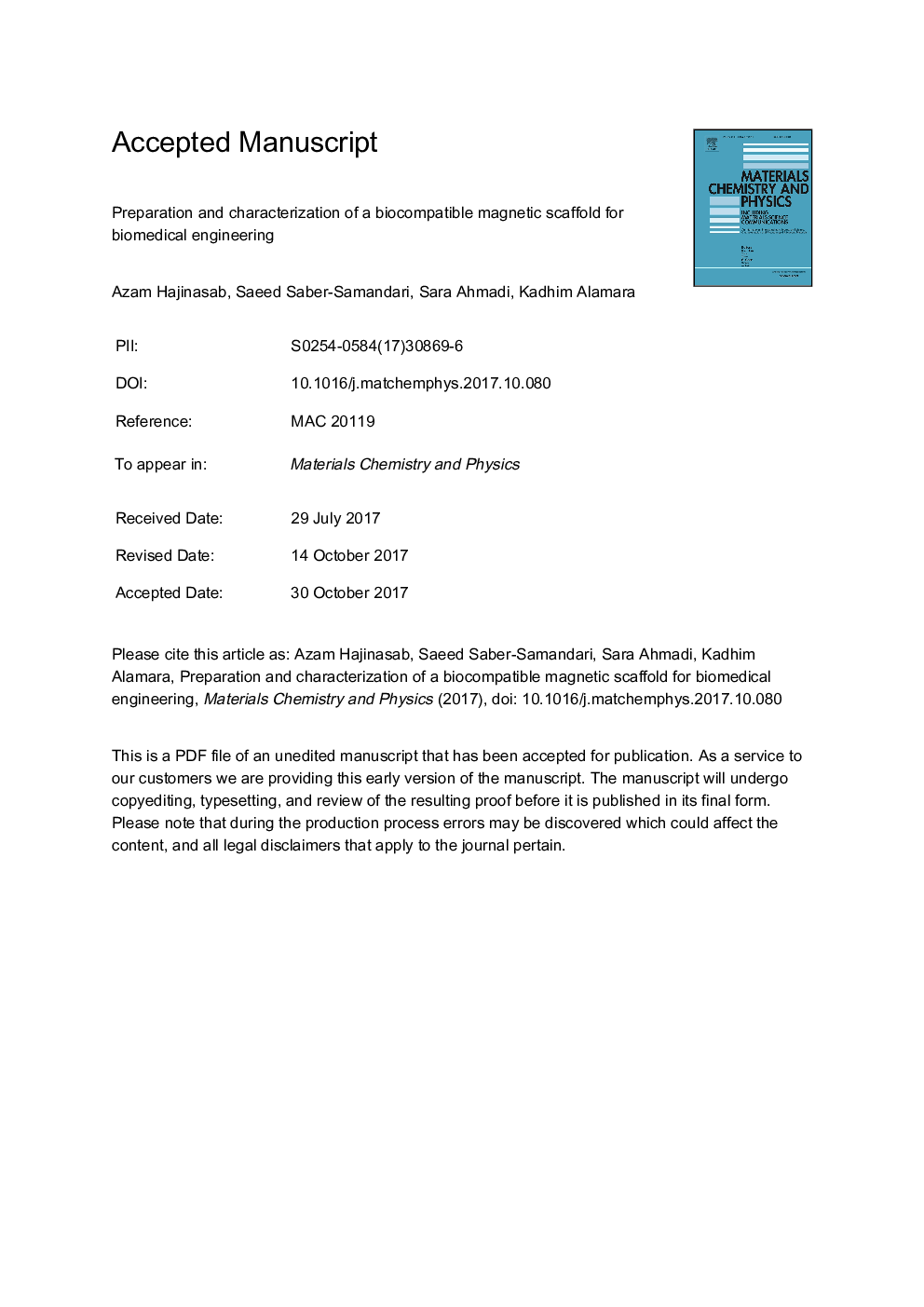| Article ID | Journal | Published Year | Pages | File Type |
|---|---|---|---|---|
| 7922440 | Materials Chemistry and Physics | 2018 | 31 Pages |
Abstract
According to the results, the FTIR spectrum confirms the presence of gelatin, hydroxyapatite and magnetite nanoparticles. The XRD patterns show the presence of ceramic crystalline area in the gelatin/hydroxyapatite network and also the Fe3O4 nanoparticles. SEM images of the scaffolds show a highly interconnected porous structure with maximum 85% porosity. The pore size range of the scaffolds is 120-210 μm. The SEM-EDS analyses confirms the presence of Fe element in the structure of composites. Comparing the mechanical properties of the scaffolds with the trabecular bone tissue revealed that the compressive strength of the scaffolds is in the adequate range of 2-4.5 MPa. In addition, the magnetization test revealed that the Fe-4 sample with highest amount of Fe3O4 possess a proper magnetic property. Results suggested that by increasing the percentage of Fe3O4 the swelling of sample decreased for both water and PBS solutions. Cell culture experiments exhibited that the scaffold extracts were not cytotoxic in any concentrations. According to the results, the synthesized 3D nanocomposite scaffolds possess a great potential to be used as bone substitute and drug carrier simultaneously.
Related Topics
Physical Sciences and Engineering
Materials Science
Electronic, Optical and Magnetic Materials
Authors
Azam Hajinasab, Saeed Saber-Samandari, Sara Ahmadi, Kadhim Alamara,
